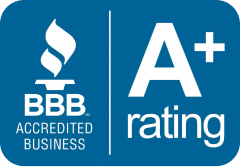Find the Best affordable
Medicare Plan



Andrew Smith
The Medicare Annual Election Period (AEP)
The Medicare Annual Election Period: Would you like to update your Medicare coverage? There are specific times when you can make these modifications, and these times vary based on the sort of Medicare plan you have. The Annual Election Period (AEP) is when you can join up for, change, or disenroll from Medicare Advantage (formerly known as Medicare Part C) and Medicare prescription drug coverage.
Each year, the Medicare Advantage and Medicare prescription medication coverage Open Enrollment Period runs from October 15 to December 7. Unless you qualify for a Special Election Period, the AEP is your chance to make these adjustments if you didn’t sign up for one of these plans when you initially became eligible for Medicare (during your Initial Enrollment Period) (SEP).
What changes can you make during the AEP?
Here’s a breakdown of everything you can do during Annual Enrollment:
- Change from Original Medicare, Parts A, and B, to a Medicare Advantage plan.
- Change from a Medicare Advantage plan to Part A and Part B of Original Medicare.
- Switching from one Medicare Advantage plan to another is a common occurrence (regardless of whether either plan offers drug coverage).
- Become a member of a Part D prescription drug plan.
- Switching from one Medicare prescription drug plan to another is a simple process.
- You can entirely opt-out of Medicare’s prescription drug coverage.
Changes made during the AEP take effect on January 1 of the following year.
Making changes after the Medicare AEP
Let’s say you’re enrolled in a Medicare Advantage plan and wish to move to Part A and Part B of Original Medicare. During the Medicare Advantage Open Enrollment Period (OEP), which runs from January 1 to March 31 each year, you can make this modification.
You have until March 31 to enroll in a Medicare Part D prescription medication plan if you move to Original Medicare during this time. This coverage is optional, however, if you wait until a later date to enroll, you may be charged a late enrollment penalty (see below). After the plan receives your enrollment form, your coverage will begin on the first day of the month.
During the Medicare Advantage Open Enrollment Period, you can switch from one Medicare plan to another if you have one.
Through Special Election Periods, Medicare authorizes modifications outside of the usual enrollment periods under particular conditions that are typically out of the beneficiary’s control, such as Medicare terminating its contract with your plan (SEPs). Other circumstances that fall within this category include, but are not limited to:
- You’re leaving the service area of your plan.
- Receiving benefits from both Medicare and Medicaid.
- Extra Assistance is available if you meet certain criteria.
- Living in, relocating to, or leaving an institution such as a skilled nursing facility or a long-term care hospital.
If any of the following are true, you may be assessed a late-enrollment penalty (amount added to your Medicare Part D premium for the duration of your coverage):
- When you first become eligible for Medicare, you do not enroll in a Medicare prescription drug plan (such as a stand-alone Medicare prescription drug plan or a Medicare Advantage plan that includes the prescription drug coverage).
- For a period of 63 days or more, you have had no other creditable prescription drug coverage.
- After that, you elect to join a Medicare drug plan at a later time.
Read More: Medicare Open Enrollment 2022 Best How to enroll Guide
More to explorer

Early Medicare (How to know If you Are Eligible)
How old do you have to be to get Medicare? Early Medicare: Do you want to know when you can start receiving

Do I need to sign up for Medicare at 65 if I’m still working? (Need to Know)
Q: If I’m still working at 65, do I need to enroll in Medicare? A: Medicare eligibility begins at age 65, and enrolling early

Medicare Open Enrollment 2022 Best How to enroll Guide
Medicare Open Enrollment 2022 Guide: A multitude of techniques is available to verify the status of a Medicare application, including: Using the

